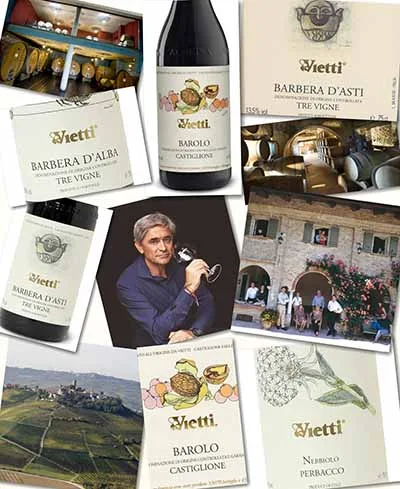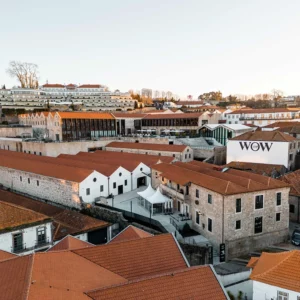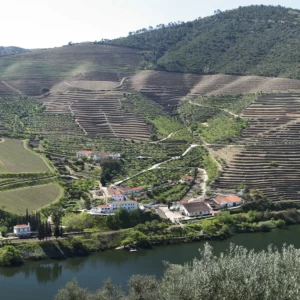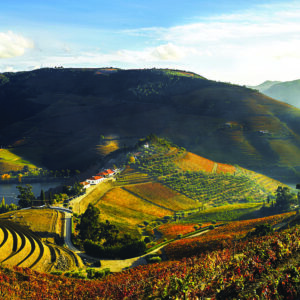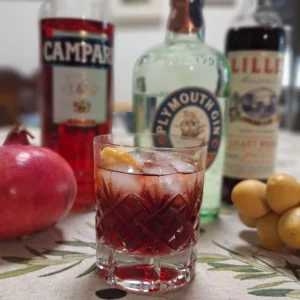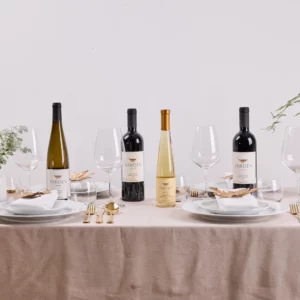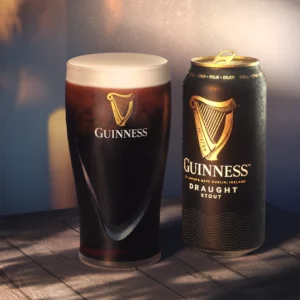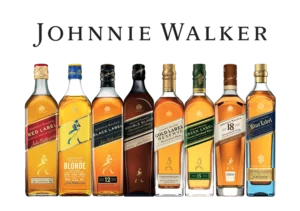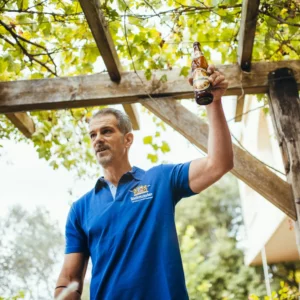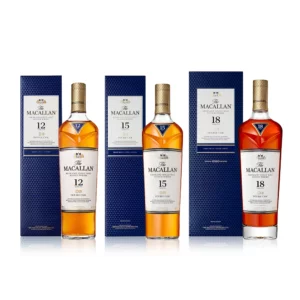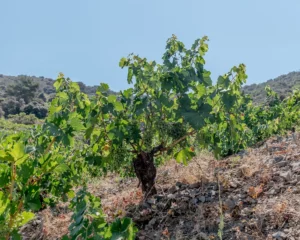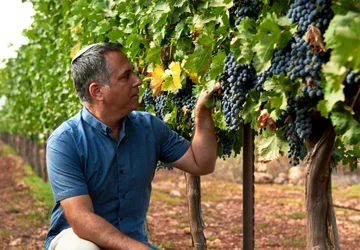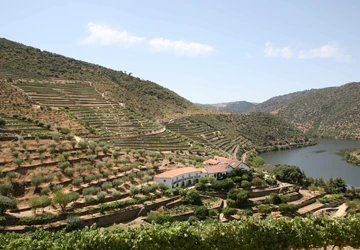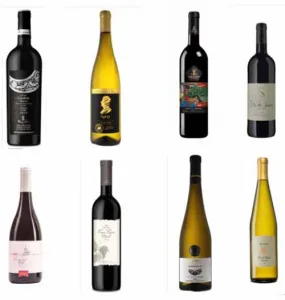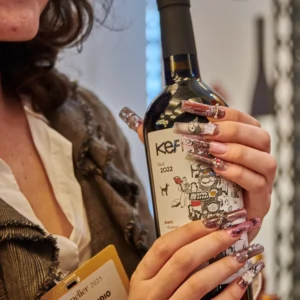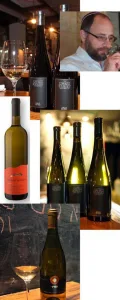I was recently invited to taste the wines of Vietti Winery. They are one of the stalwarts of both Barolo, the wine and Piedmont, the region. Piedmont is along with Tuscany, the most famous wine region in Italy. Yet, whereas Tuscany is grand, worldly and stately, rather like Bordeaux, Piedmont is more like Burgundy. Rural, agricultural and provincial. A farming community that grows wine.
The main grape varieties grown in Piedmont are Nebbiolo, Barbera and Dolcetto for reds, and Arneis, Cortese and Moscato for whites. There are two main regions, the Langhe region surrounding the town of Alba and the Montferrato region around Asti. These are to the south of Turin in rolling hills, which are really the foothills to the Alps. That is why the word Piedmont means ‘the foot of the mountain.’ Alba is famous for its wine, its truffles and hazelnuts, but most of all for being the birthplace and home of Nutella. However, for the wine intelligentsia, this is Barolo and Barbaresco country.
Barolo is situated south west of Alba. It is a big wine, but without great depth of color. It is often brick red with an orange tinge. Yet it has a beautiful, haunting aroma of tar, roses, wild fruit, violets and plums. It is more a scent than an aroma. It is a wine to inhale as much as to drink. Barolo is very tannic, with harsh acidity. When I was younger, we regarded Barolo with awe. It was known as the wine of kings, and king of wines. We were told it was one of the great red wines of the world. However, because of its exaggerated tannin, it needed years of bottle age to become tamed. Unfortunately, despite aging for one or even two decades, some of them never softened and became approachable.
With a new generation came new technology and new ideas. They made wine in small barrels, used lashings of new oak and to the horror of the traditionalists made wine in an easier style (relatively speaking of course, Barolo is never easy drinking.) Now wineries have chosen a middle path, between modernity and the traditions passed down over a century. Barolo is made from Nebbiolo, which is difficult to grow. The name Nebbiolo refers to the fog, which often coats the vineyards. It is a variety barely grown in Israel and Lotem Winery make a surprising varietal Nebbiolo. However, unlike most of the noble varieties, it is not a variety that travels well. There is something of its cussedness and its elusive character in Pinot Noir, however the Greek variety Xinomavro may be the closer.
Barbera is the largest planted variety in Piedmont. It is enormously versatile. It is more approachable than Nebbiolo, with aromas of black cherry, plums, a high acidity and very little tannin. It can be quite plush, with good complexity, almost like a Merlot but with a touch of spice, and a refreshing acidity. Barbera d’Alba wines are considered a little more robust than Barbera d’Asti. Which is better? Swings and roundabouts. On one hand, in Asti the best sites are devoted to Barbera, whereas in Alba, Barbera plays number two to Nebbiolo. On the other hand Barbera d’Alba can benefit by an infusion of 15% Nebbiolo. Which is better depends on the producer, but from wherever, it remains a great food wine.
Dolcetto is the third on the pecking order, after Nebbiolo and Barbera. The word, which sounds like a brand of ice cream, means ‘little sweet one’. The wine is deep purple, light, with juicy-fruity aroma, crunchy fruit, is easy drinking and refreshing. It is the perfect lunchtime wine. It is similar to a Beaujolais maybe, but has more mid palate presence than a regular Beaujolais.
Arneis is a variety producing slightly floral, minerally, refreshing white wines. It was revived by Vietti Winery, the savior of Arneis…which brings me back to the Viettis.
The Vietti family have been around a long time. Their name may be found in the church registers dating back to the 17th century. They own all their own 55 hectares of vineyards which they farm organically. They produce nearly 500,000 bottles of wine, specializing mainly in Barolo and Barbera, but also Dolcetto and Arneis. They produce Barbaresco and Moscato d’Asti too. The difference between Barolo and Barbaresco is a mere 17 kilometers. Barbaresco is situated south east of Alba. Yet for most of the region’s history, the makers of Barolo and Barbaresco focused on their own heritage, as though the other was a world away and made from a different grape variety. In fact, they are both made from Nebbiolo, but crossing the imaginary border was just not done. Now there is more flexibility for roaming into the neighbor’s territory!
The winery has been part of the family for four generations, since the 19th century. It is based in Castiglione Falleto, a village in the heart of Barolo. Farmers in those days herded cattle, grew corn and practiced mixed farming. Carlo Vietti founded the winery in the late 19th century. The growing of grapes and the making of wine was part of the mix, but was no more important than anything else, but wine was still made, though it was often sweet in those days. The oldest bottle they have found with a label, dates back to 1873! There were not many bottles with labels in those days.
The change began with a split between two brothers. One, Giovanni took over the farm, and so the other, Mario, took an opportunity to choose a new life in America. However, when Giovanni passed away before his time, Mario was called back to run the family business in 1919. He was known in the village as ‘the crazy American’, because he immediately made changes, in a place where change and progress was frowned upon. He followed an instinct and honed a vision as the returning outsider, who sees everything. Firstly, he took the radical decision to focus on wine and the winery. He then, way ahead of his time, began a program of leasing vineyards in the best sites in the different communes. Why and how, I don’t know, but it showed astonishing foresight. Certainly, it was well before the conservative locals followed suit. It was revolutionary and Vietti has benefited from this wisdom until today. Underlying everything they have done ever since adheres to a basic principle. They have never forgotten they are farmers, bringing the fruit to the glass, rather like those growing ‘farm to table’ vegetables.
The next pioneer in the story of Vietti was Alfredo Currado, who had married Mario’s daughter Luciana Vietti in the late 1950’s. He was a winemaker and also became a trailblazer. He was the first to bring stainless steel tanks to the region. He had visited Burgundy, which had affected him deeply. In 1961 he made the first single vineyard wines, way before it was fashionable. In 1964 he became the first producer of Barolo to make Barbaresco. He also, more out of curiosity rather than conviction, got behind the Piedmont white wine varietal, Arneis. The variety had previously been used as a very minor part in a field blend planted with Nebbiolo to soften the red variety’s angular, harsh edges. So much so, it was sometimes known as ‘white nebbiolo.’ Folklore tells us that Alfredo was challenged to give Arneis a chance, after a discussion with his priest at Church one day. He decided to plant Arneis in the Roero region and launched it as a single vineyard wine in 1967. He made 4,000 bottles. Today over 13 million bottles are produced in Piedmont! He became regarded as the father of the variety. Another lasting innovation was using artists labels since 1974. This was similar to what Chateau Mouton Rothschild had done previously, but it was a significant marketing move in Italy at the time. Since the 1982 vintage, the artist label has been dedicated to the Barolo Villero.
The baton was then passed onto Luca Currado Vietti, the son of Alfredo and Luciana, and his wife Elena. He had winemaking experience at Simi Winery in California, Opus One and Chateau Mouton Rothschild in Bordeaux. He continued the family penchant for quality, with a flair for the unexpected and a curiosity for experimentation. Initially he was only allowed to look after Barbera, and his father continued with the precious Nebbiolo. On taking over, one of his first actions was planting Barbera in a Nebbiolo vineyard, against his father’s wishes. Barbera was in those days considered a cash cow and not an opportunity for making a quality wine. It was a quality driven decision, proved right in time. Luca is a restless tinkerer, constantly trying new things, but the quality and loyalty to the purity of terroir has been sacrosanct.
Nonetheless, the region was rocked to its core when the winery was purchased by Krause Holdings in 2016. Eyes rolled and heads fell into hands as locals absorbed the shock. The Krause family are Barolo lovers and owners of convenience stores in the US. Luca and Elena made the case that they are involved just as much as before, but with the financial security to preserve vineyard sites, as land prices continued to soar to ridiculous heights. Luca sees this as way of safeguarding the future, and certainly not as selling out. Maybe the family are just smelling the coffee first, as they have done throughout their history.
I tasted the wines, each of which are standard bearers of their type.
Vietti Roero Arneis 2018 (NIS99) was very pale, almost water colored. It had an oh so slight floral aroma with a hint of citrus , a very minerally palate, and clean acidity on the finish.
Vietti Dolcetto d’Alba Tre Vigne 2016 (NIS 115). Purple with juicy, wild blackberry fruit. The thread of drying tannin on the finish made it refreshing. A good, quaffable wine.
Vietti Barbera d’Alba Tre Vigne 2017 (NIS 145). The ‘Tre Vigne’ in the name, refers to the fact that the wine is sourced from three vineyards. This has aromas of red cherry, ripe plum against a backdrop of vanilla. The acidity ensures a refreshing finish. It was certainly very good, but I actually preferred their Barbera d’Asti Tre Vigne 2017 which was a little more fruit forward and fresher in the mouth.
Vietti Nebbiolo Perbacco 2017 (NIS 160). This a great value introduction to Barolo. A ‘mini-me’ Barolo if you like. Good quality and it provides a real glimpse into the magic that is Nebbiolo.
Vietti Barolo Castiglione 2015 (NIS 330). A truly fine Barolo. Refined red cherry berry fruit and a hint of violets, backed by an earthy, rasping character. Savory, it is elegant yet intense and persistent, with good length. A wine to return to, again and again, over a long meal.
Vietti Winery continues to be one of the best quality wineries of the region. The family have been constant pioneers, often the first to innovate, but are also keen to maintain traditions. The steps they have taken to preserve the family silver will be judged over time. In the meantime, the wines continue to be excellent expressions of their local varieties and their unique Piedmontese terroir.
Wine trade veteran Adam Montefiore has contributed to the advance of Israeli wine for over 30 years. He is the wine writer for the Jerusalem Post. www.adammontefiore.com


